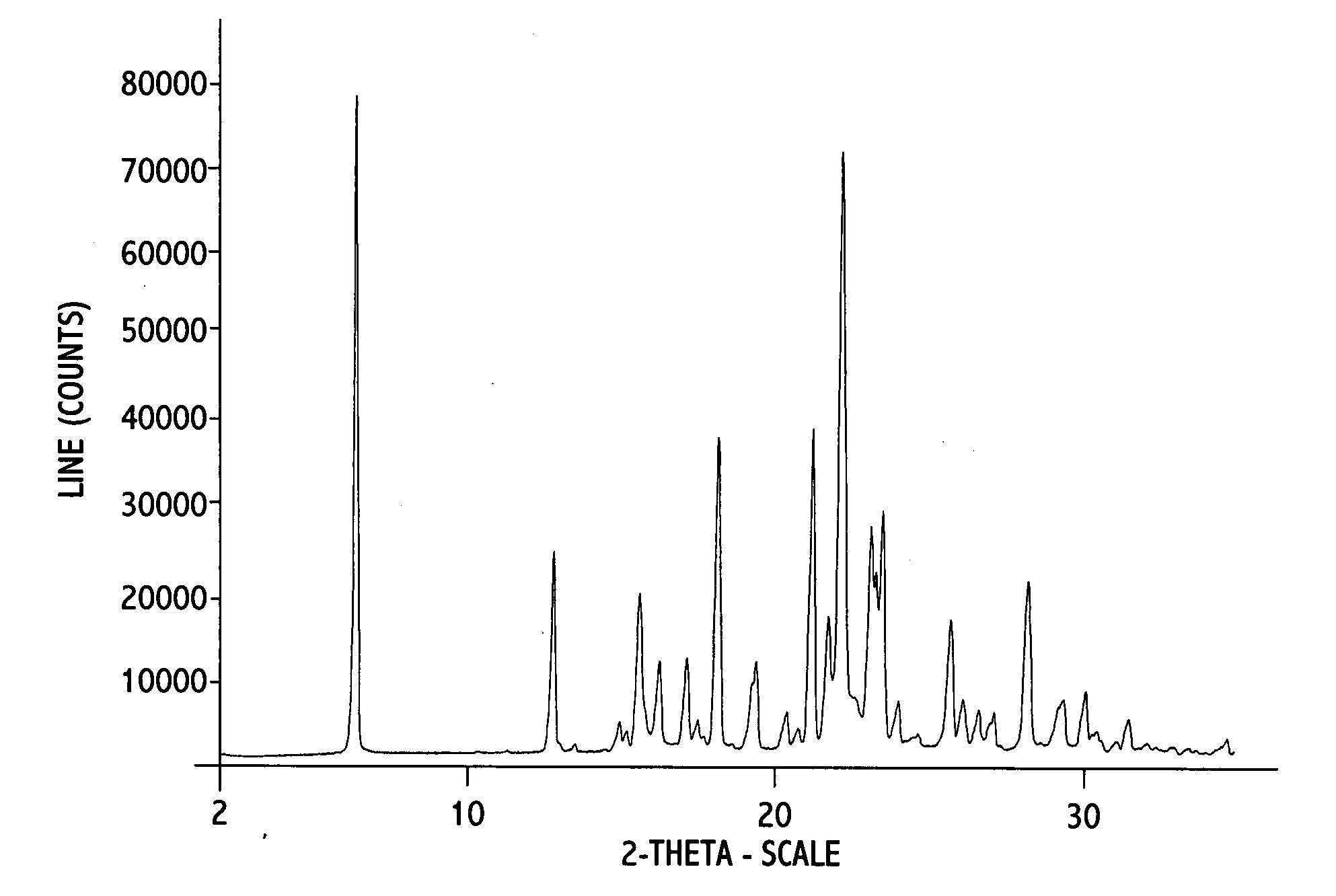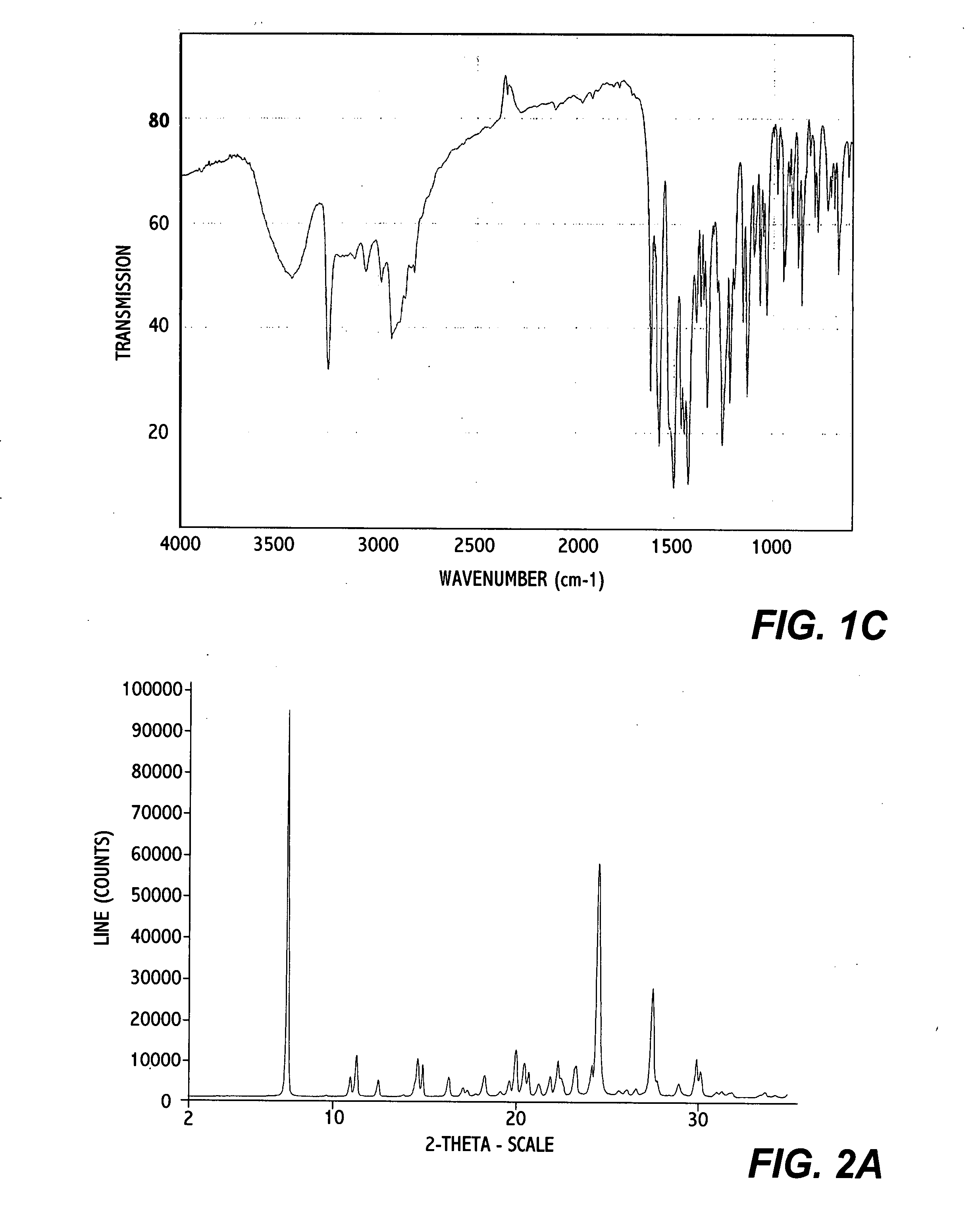Crystalline erlotinib
a technology of erlotinib and erlotinib, which is applied in the field of crystalline erlotinib, can solve the problems of inhibiting signaling pathways, reducing survival, and reducing the growth of malignant tumors
- Summary
- Abstract
- Description
- Claims
- Application Information
AI Technical Summary
Benefits of technology
Problems solved by technology
Method used
Image
Examples
example 1
erlotinib Form II
[0052] 0.2 g of erlotinib monohydrate Form I was dissolved in 5 ml of 2-propanol at reflux. The solution was allowed to cool to R.T. and stirred at R.T. for about 19 hours; crystallization already occurred within the first hour of stirring. The solid was isolated by filtration over a P3-glass filter (reduced pressure) and air dried at R.T. and under ambient conditions for a few hours. An off-white powder with a yield of 140 mg was obtained. (analytical data in FIG. 1A, 1B, and 1C)
example ii
erlotinib monohydrate Form I
[0053] 3.0 g of erlotinib hydrochloride was suspended in 400 ml of demi-water / ethyl acetate (1:1 V / V) at R.T. To the suspension / emulsion, vigorously stirred at R.T., 300 mg of NaOH dissolved in 50 ml of demi-water was added very slowly (dropwise, >1 equivalent of OH−). As a result of this, the HCl was removed from the drug substance and the drug substance was extracted into the organic phase. Some extra NaOH was added as the water-layer proved to be hardly basic afterwards and to ensure complete removal of HCl from the drug substance. The organic phase was twice washed with water and filtered over a P3-glass filter (reduced pressure), packed with prewashed Celite 545. The filtrate was dried with sodium sulphate for 15-30 minutes. The solution was filtered over a P3-glass filter (reduced pressure) to remove the sodium sulphate. Then, the solvent was evaporated under vacuum to dryness, yielding a pale beige, crystalline solid with a yield of approximately 1...
example 3
erlotinib monohydrate Form III
[0054] 0.2 g of erlotinib was dissolved in 15 ml of acetone at R.T. The solution was filtered over a P3-glass filter (reduced pressure) to remove foreign particles. To the clear filtrate, stirred at R.T., 50 ml of demi-water was added dropwise. During addition of water, fast crystallization occurred. The suspension was stirred at R.T. for about 2 minutes. The solid was isolated by filtration over a P3-glass filter (reduced pressure) and air dried overnight at R.T. and under ambient conditions. An off-white, fluffy to foamy powder mass was obtained. The yield was 150 mg. (analytical data in FIG. 3A, 3B, and 3C)
PUM
| Property | Measurement | Unit |
|---|---|---|
| Angle | aaaaa | aaaaa |
| Angle | aaaaa | aaaaa |
| Angle | aaaaa | aaaaa |
Abstract
Description
Claims
Application Information
 Login to View More
Login to View More - R&D
- Intellectual Property
- Life Sciences
- Materials
- Tech Scout
- Unparalleled Data Quality
- Higher Quality Content
- 60% Fewer Hallucinations
Browse by: Latest US Patents, China's latest patents, Technical Efficacy Thesaurus, Application Domain, Technology Topic, Popular Technical Reports.
© 2025 PatSnap. All rights reserved.Legal|Privacy policy|Modern Slavery Act Transparency Statement|Sitemap|About US| Contact US: help@patsnap.com



